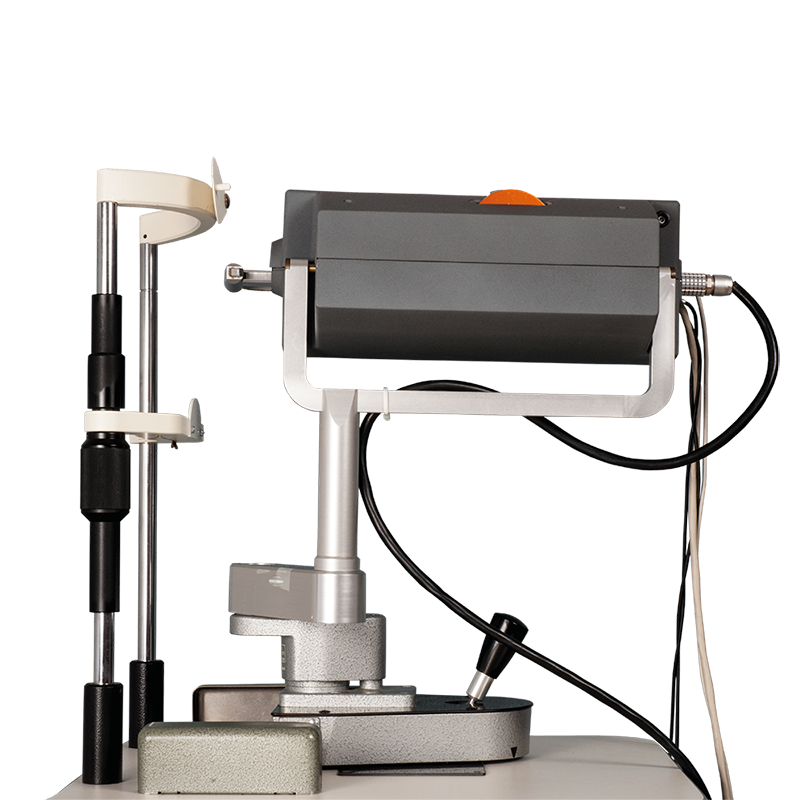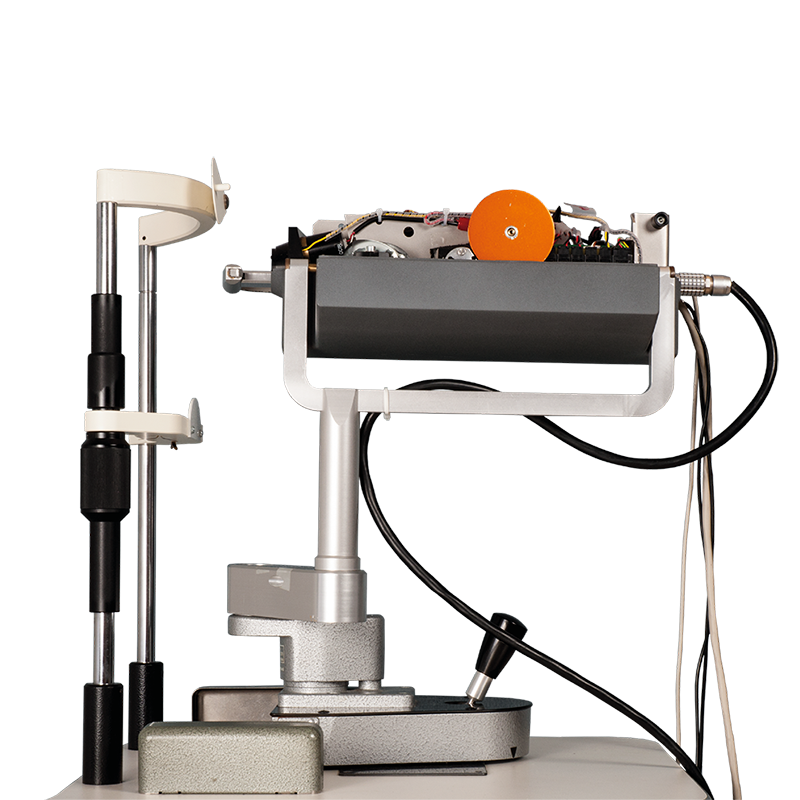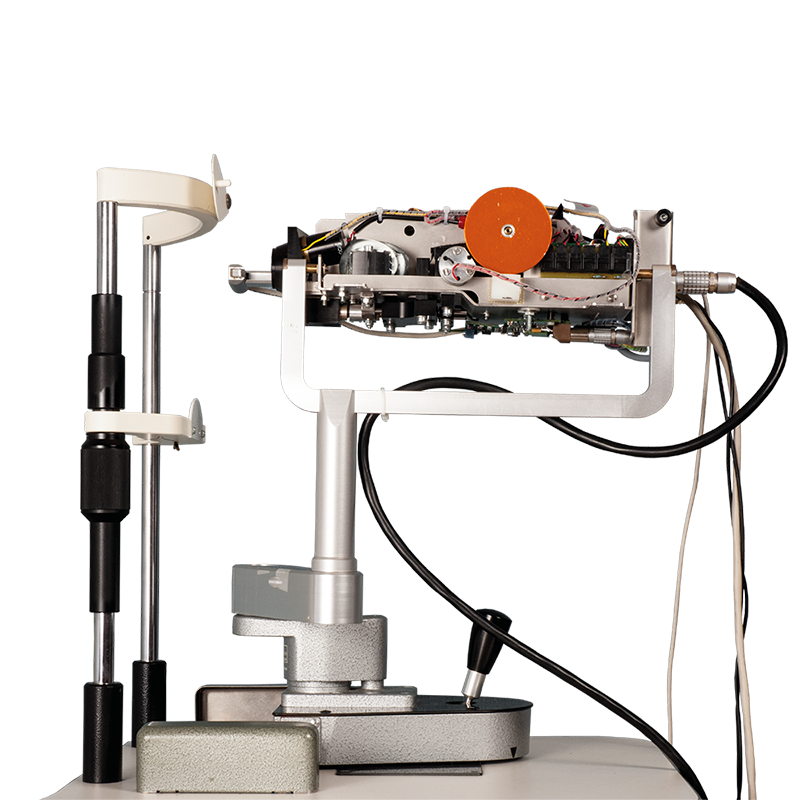Spécifications :
Instrument :
- Size: 30 cm x 26 cm x 6 cm
- The instrument has to be mounted on a table.
Optical systems
- 1. Observation and illumination are restricted to the optic nerve head.
- 2. Observation at the cornea of the probing beam.
- 3. Fixation points placed at 15° of the ONH observation.
- 4. Add-on for flicker light in the fovea region.
Subject
- The instrument required a cooperative subject who is asked to look at a faint point.
- No pupil dilatation is required for choroidal blood flow measurement
- Pupil dilatation is required for ONH blood flow measurement
Probing light
- Wavelength: 795 nm
- Intensity: 100 µW
Probing intensity
- Less than 100 µW (micro-watt)
Optical principle
- Schlieren: the illumination spot is excluded from the detected scattered light.
Ametropia correction
- +/- 2.5 Dioptres
Data Analysis
- The instrument delivers an electrical signal, which is analysed by FloM-acquisition.
Reference
- This instrument is derived from the one described in the following publication. It has the same optical arrangement but another mechanical support: Compact instrument for Laser Doppler velocimetry. Geiser MH, Diermann U, Riva CE. Biomedical Optics, Journal of Biomedical Optics, October 1999, Volume 4, Issue 4, pp. 459-464



